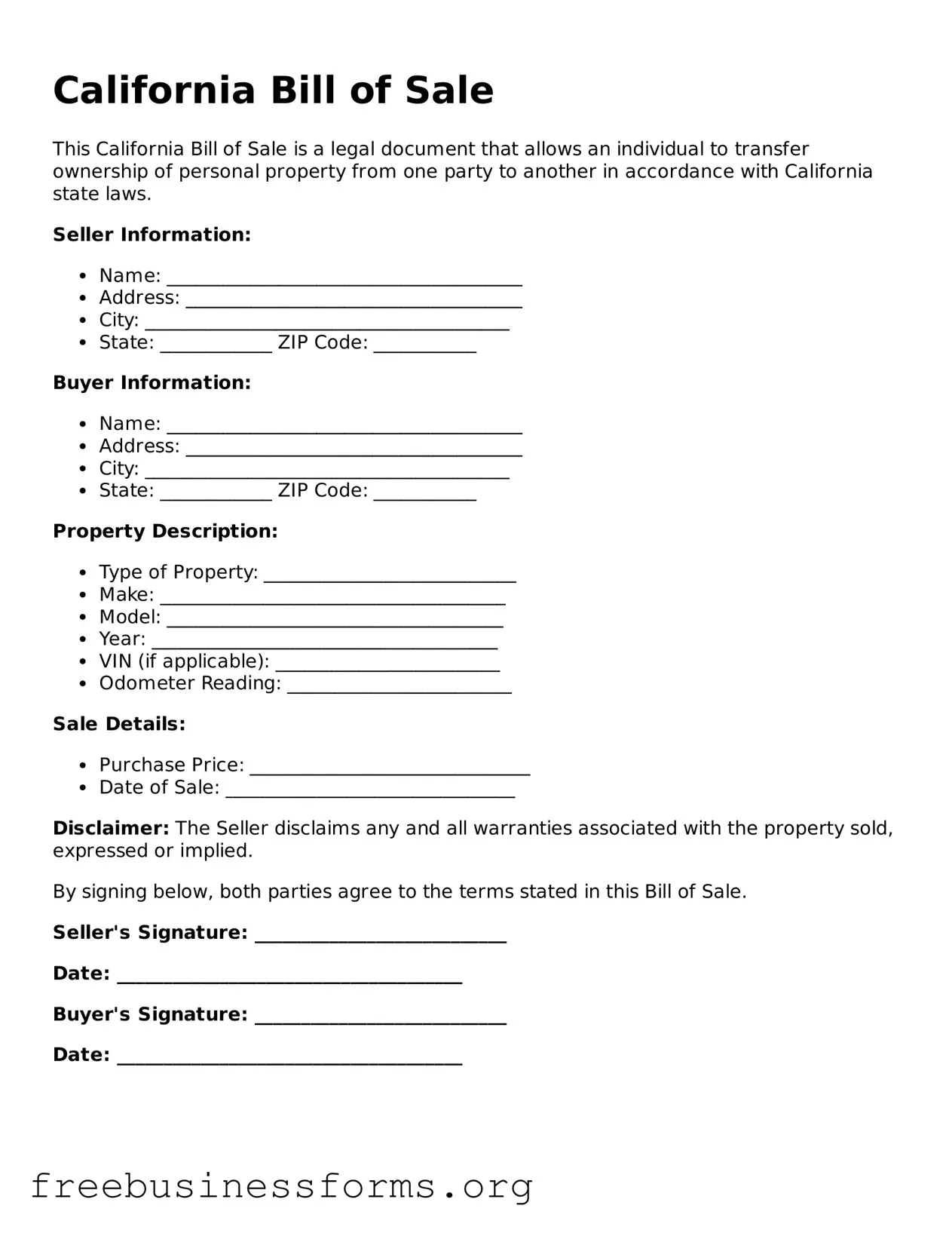California Bill of Sale
This California Bill of Sale is a legal document that allows an individual to transfer ownership of personal property from one party to another in accordance with California state laws.
Seller Information:
- Name: ______________________________________
- Address: ____________________________________
- City: _______________________________________
- State: ____________ ZIP Code: ___________
Buyer Information:
- Name: ______________________________________
- Address: ____________________________________
- City: _______________________________________
- State: ____________ ZIP Code: ___________
Property Description:
- Type of Property: ___________________________
- Make: _____________________________________
- Model: ____________________________________
- Year: _____________________________________
- VIN (if applicable): ________________________
- Odometer Reading: ________________________
Sale Details:
- Purchase Price: ______________________________
- Date of Sale: _______________________________
Disclaimer: The Seller disclaims any and all warranties associated with the property sold, expressed or implied.
By signing below, both parties agree to the terms stated in this Bill of Sale.
Seller's Signature: ___________________________
Date: _____________________________________
Buyer's Signature: ___________________________
Date: _____________________________________
